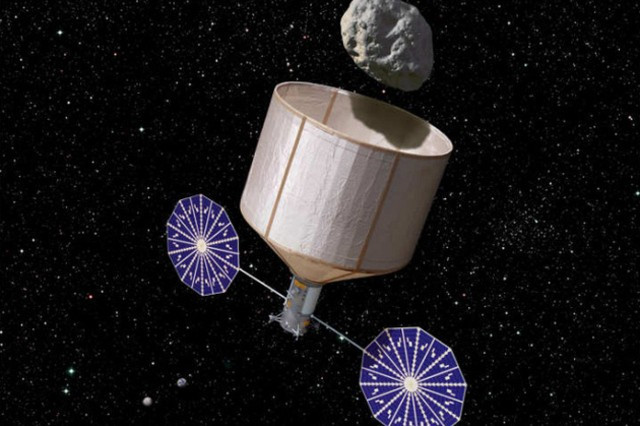Nasa Probe to 'Lasso Asteroid and Haul it to the Moon'

Nasa plans to launch a probe into space in a mission to "catch an asteroid and haul it to the moon" for further tests, a US senator has revealed.
The mission to "lasso" a 500-ton, 25ft rock and "park it near the moon" is planned for 2019, and would take two years, according to government documents.
The agency has included a request for $100 million (£65.6 million) from Congress to fund the plan in its 2014 budget request, according to Bill Nelson, the Democratic Senator for Florida, after it was first proposed last year by scientists at the California Institute of Technology.
The plan has the backing of President Obama, who has agreed to contribute $100 million for the accelerated asteroid mission in next week's budget for 2014, said Senator Nelson, who is chairman of the Senate science and space subcommittee.
Nelson, a former astronaut who spent six days orbiting the earth in 1986 on the shuttle Columbia, said the $2.6 billion (£1.7 billion) plan would bring forward an existing mission to land astronauts on an asteroid by four years, by physically fetching the rock and bringing it closer to Earth. This would enabling an Orion space capsule to dock on the rock, and its team of four astronauts to dismount and explore its surface.
Scientists would initially focus on finding the right size of small asteroid, said Senator Nelson. "It really is a clever concept," he said on Friday. "Go find your ideal candidate for an asteroid. Go get it robotically and bring it back."
Once a suitably-sized rock was found, it would be captured with the astronomical equivalent of "a baggie with a drawstring", said Donald Yeomans, head of Nasa's Near Earth Object programme to monitor asteroids in close orbit.
"You bag it. You attach the solar propulsion module to de-spin it and bring it back to where you want it," said Yeomans. "While there are thousands of asteroids that size out there, finding the right one that comes by Earth at just the right time to be captured will not be easy."
A rock that small would not pose any risk to earth, as it would burn up on entering our atmosphere, he said.
The mission would help the agency develop its ability to head off a dangerous asteroid headed on collision course with the earth, Nelson said, while also enabling astronauts to train for their planned mission to Mars in the 2030s.
The mission would "send humans farther than they have ever been before", according to the government document.
"The idea of exploiting the natural resources of asteroids dates back over a hundred years, but only now has the technology become available to make this idea a reality," the report said.
"Placing an NEA [Near Earth Asteroid] in lunar orbit would provide a new capability for human exploration not seen since Apollo. Such an achievement has the potential to inspire a nation.
"It would be mankind's first attempt at modifying the heavens to enable the permanent settlement of humans in space."
© Copyright IBTimes 2025. All rights reserved.





















